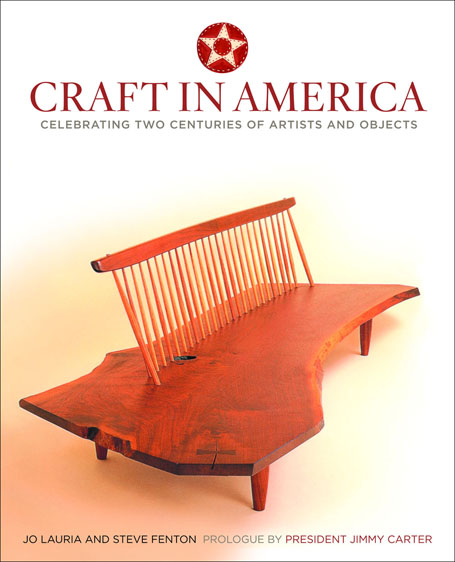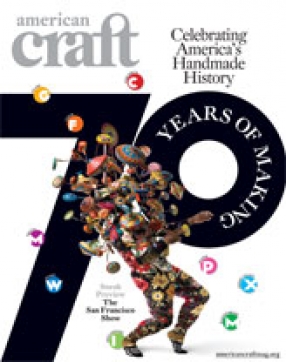
By Jo Lauria and Steve Fenton
Clarkson Potter/Publishers
$60
Seeking an introduction to the history of American craft in a single volume? A likely candidate might well be this 320-page, handsomely packaged companion book to the PBS series shown in the spring of 2007 and the related touring exhibition. The tone, as the title suggests, is upbeat, celebratory and inclusive, rather than critical or analytical.
Though the aim of the book is to survey 200 years, the organization is thematic, with a focus on communities, rather than strictly chronological, with much information offered in sidebars and extended photo captions. More often than not, the present and past are juxtaposed, as if to visually prove continuity. The section on the Shakers, for example, segues into a sidebar on contemporary artists who have “reinvented the Shaker chair,” and another on the “Japanese-Shaker” furniture of George Nakashima. Other topics under the “communities of culture” rubric are the Arts and Crafts movement—two pages on Sam Maloof’s home and furniture appear here—Native American communities and Southern contributions, especially in quilt making and pottery—an intriguing sidebar tells of David Drake, a slave potter who produced enormous storage jars inscribed with his poetry.
“Communities of Craft Teaching,” the solid center of the book, examines American craft in the 20th century through the prism of the specialized schools that nurtured craft education and production: Rhode Island School of Design, California College of the Arts, Cranbrook Academy of Art, School for American Crafts, Rochester Institute of Technology, Black Mountain College and the residency programs at Penland School of Crafts and the Archie Bray Foundation. Succinct but illuminating, this section reminds us how crucial such academic institutions were (and are) in shaping the studio craft movement and producing its leaders, many of them artist-teachers, over several generations.
The last section, “The New Studio Crafts Movement,” is a brief account of craft since the 1960s, touching on all the media—glass, ceramics, basketry, turned wood, blacksmithing, jewelry and textile arts—with sidebars on ceramic pitchers, Wharton Esherick and weathervanes, among other topics.
The summing up is left to Jonathan Fairbanks, the consulting art historian on the book, who in his historical contribution, “Shaping Craft in an American Framework,” attempts to characterize craft artists in our time. “Central to the new studio crafts movement is the realization that craft no longer needs to serve utilitarian ends,” he writes. “Today, those artists who make the bold commitment to work in craft media do so because of a passion for the expressive potentials of the materials they use.” The accessible text and striking photographs make this book a worthy introduction to this passion; the scholarly notes, bibliography and other sources at the end suggest the means to extend the journey.
The exhibition “Craft in America: Expanding Traditions” is at the Houston Center for Contemporary Craft .






Post Your Comment
Fields in bold are required. Your email address is required but not published. Please enter the five digit code as it appears in the text field on its right.